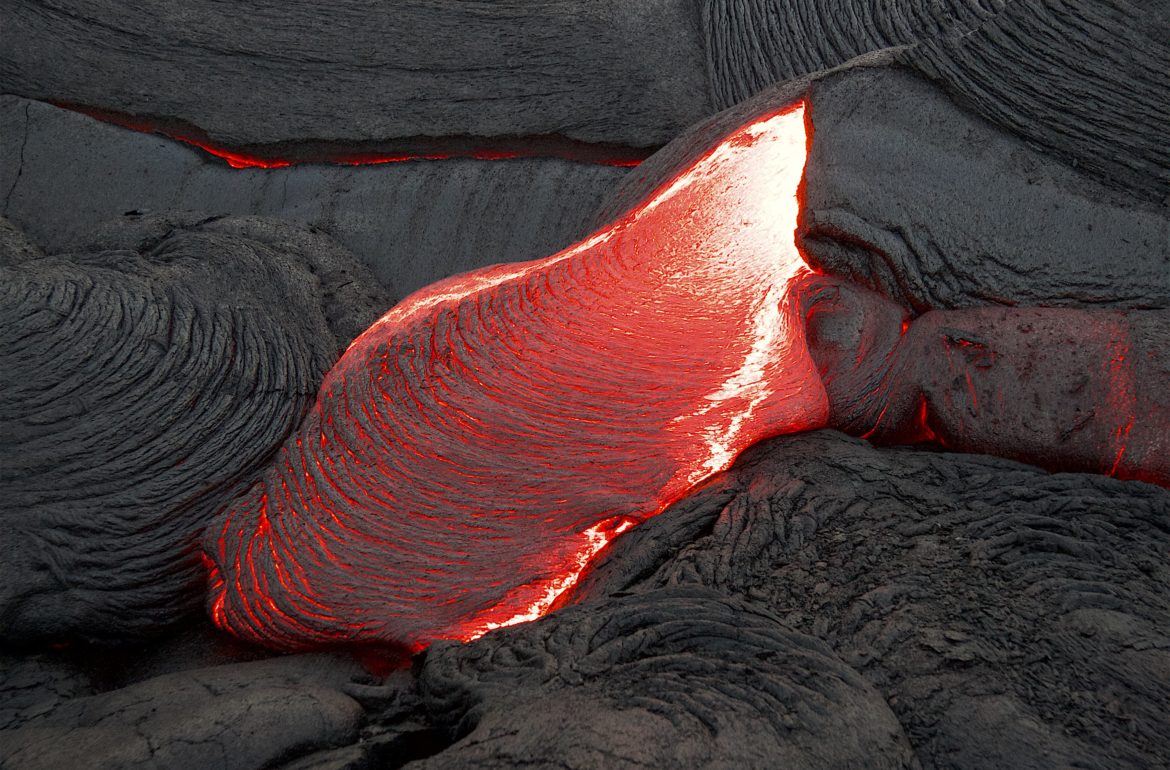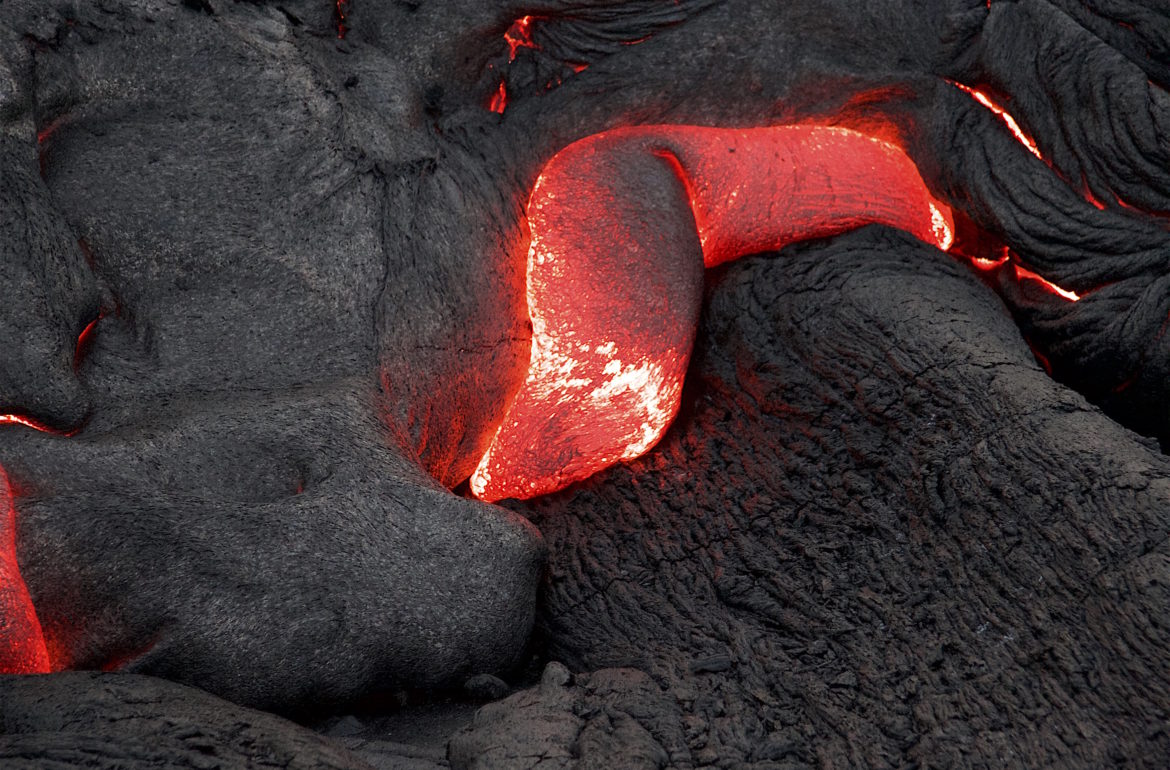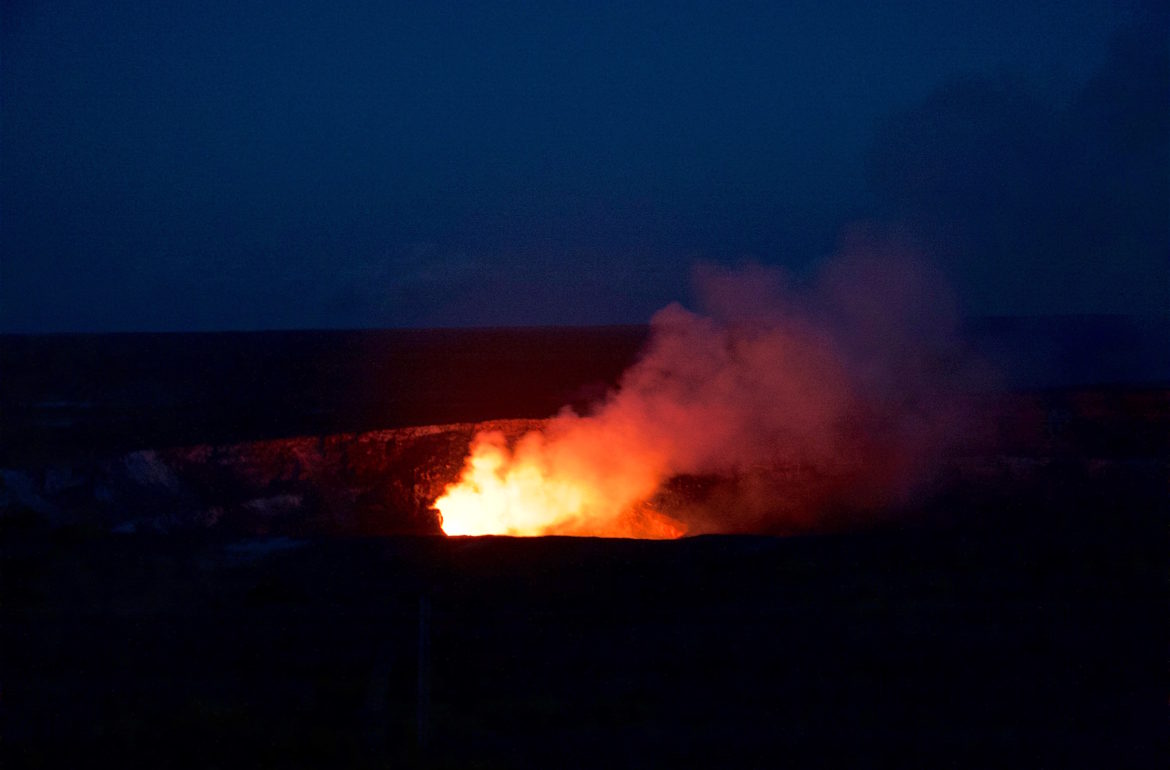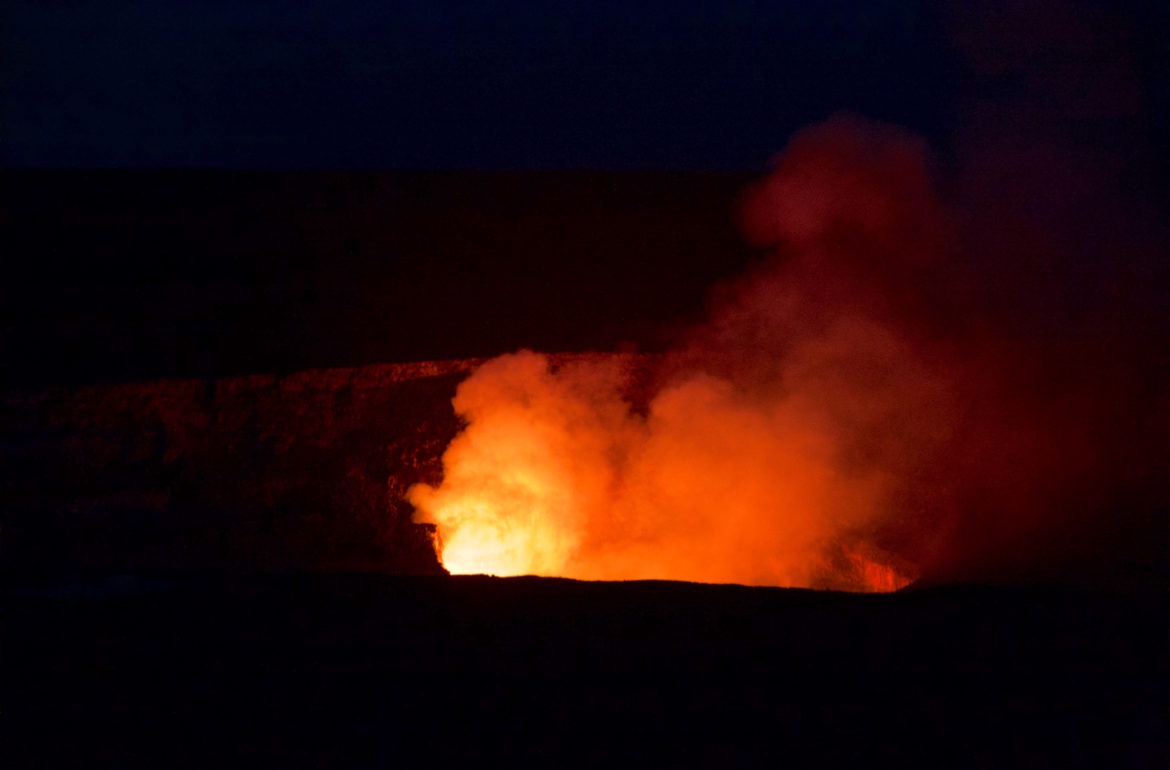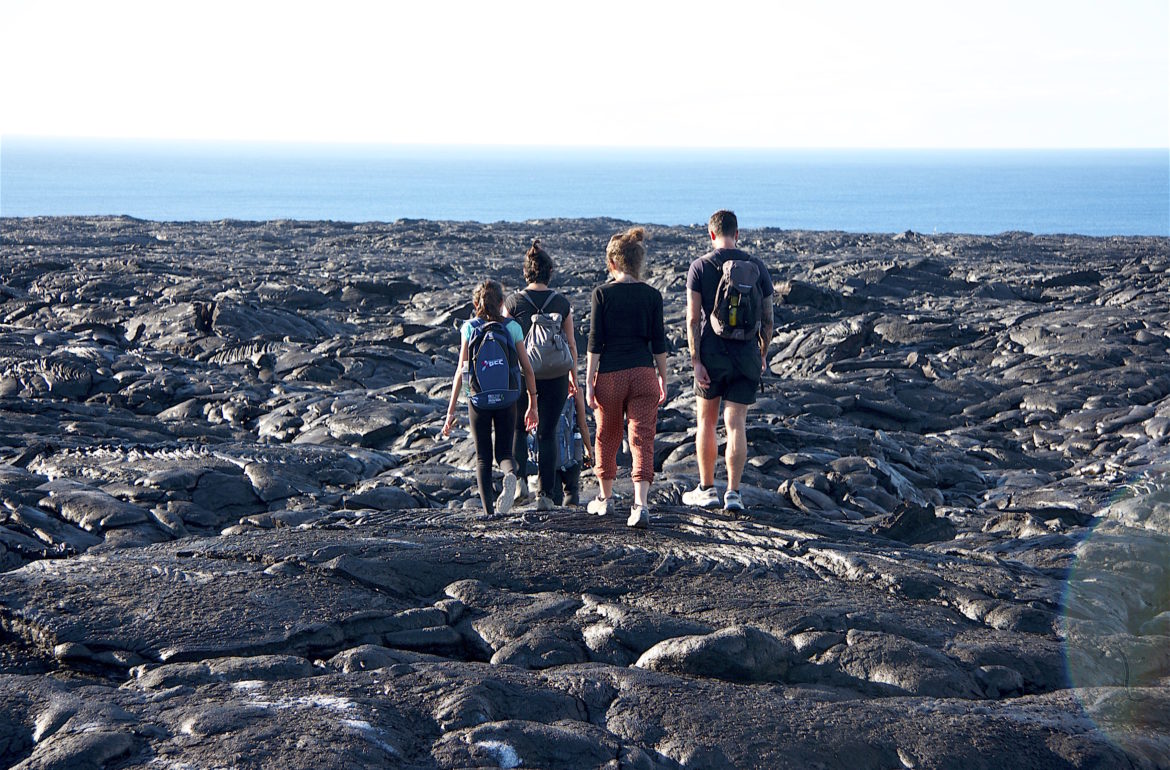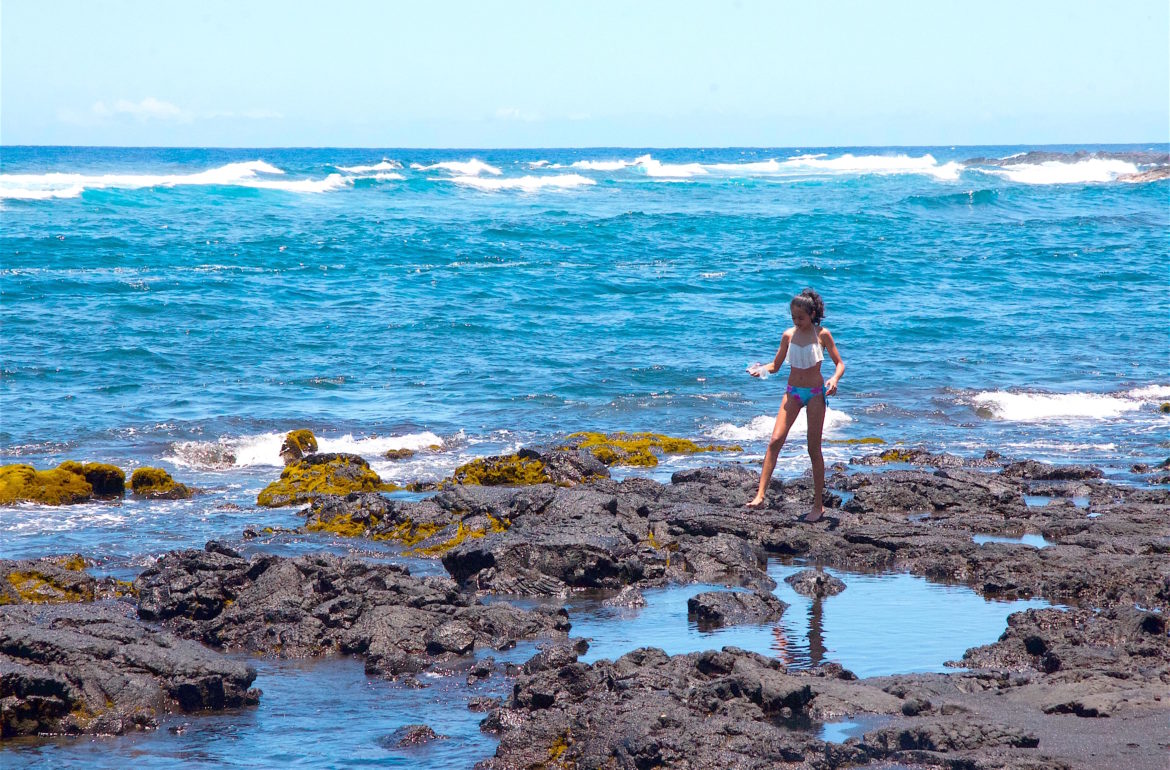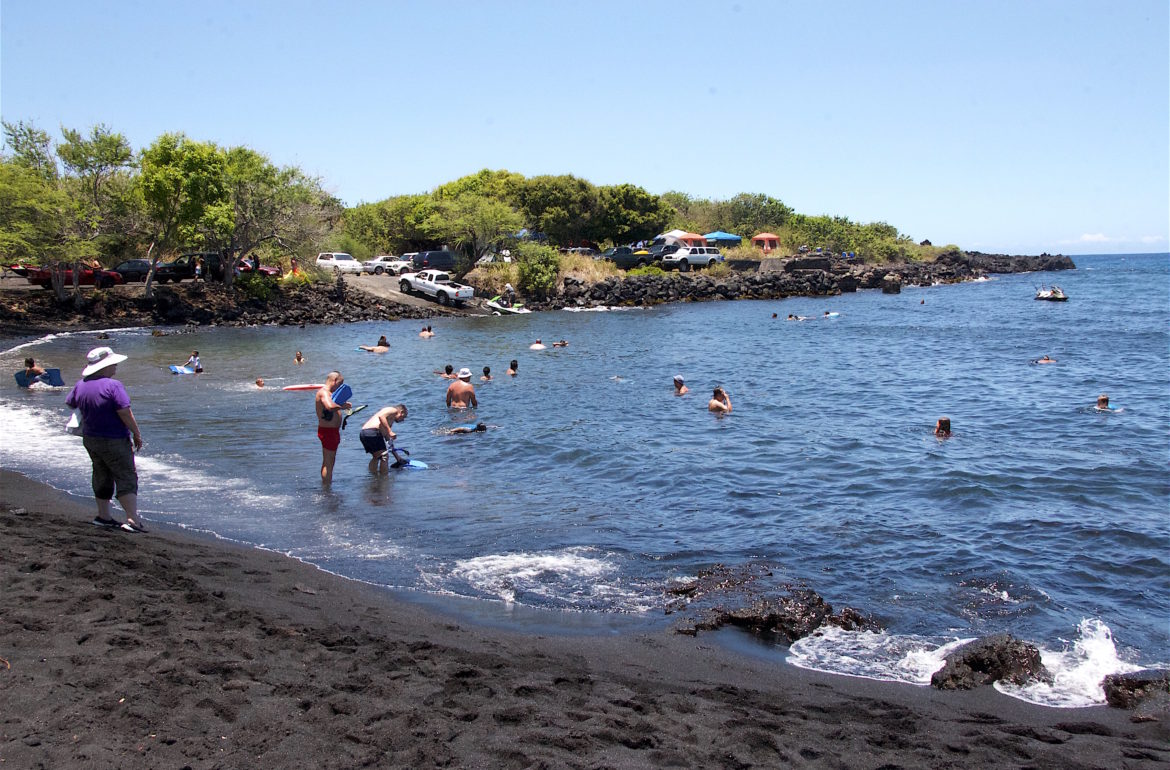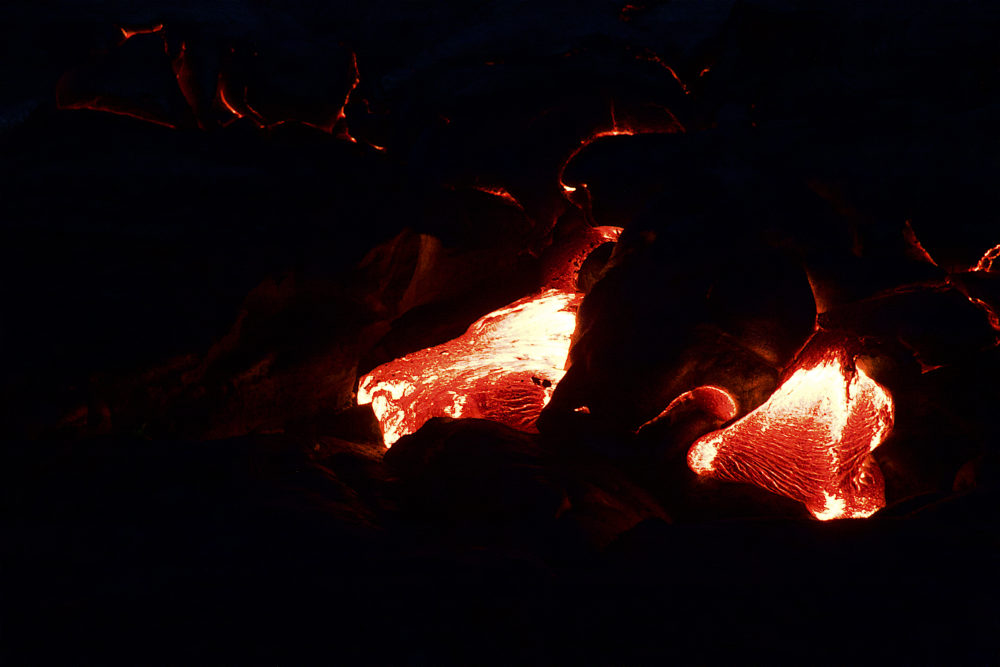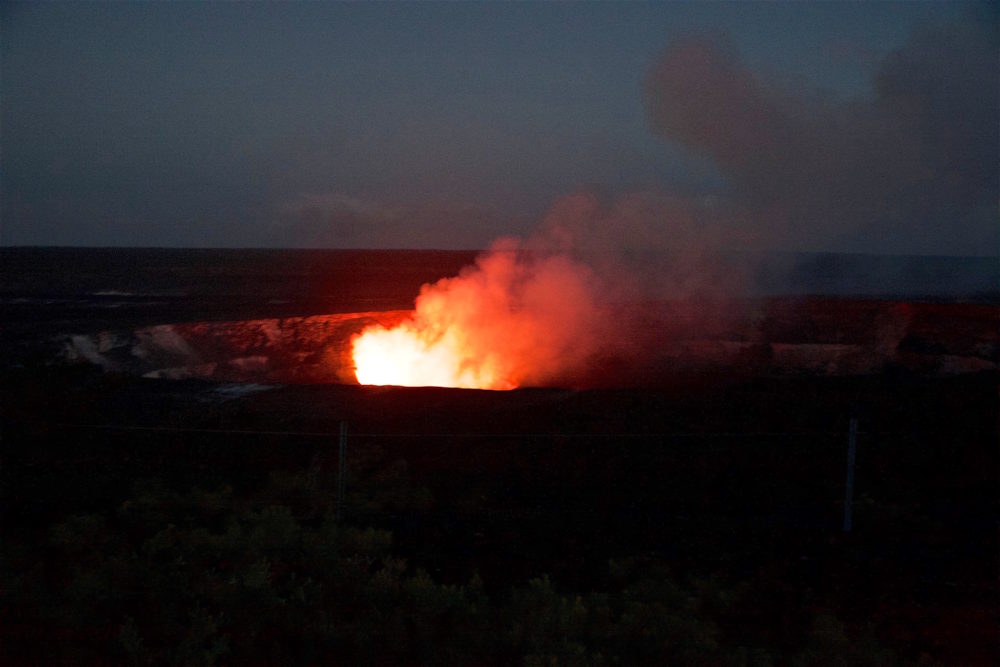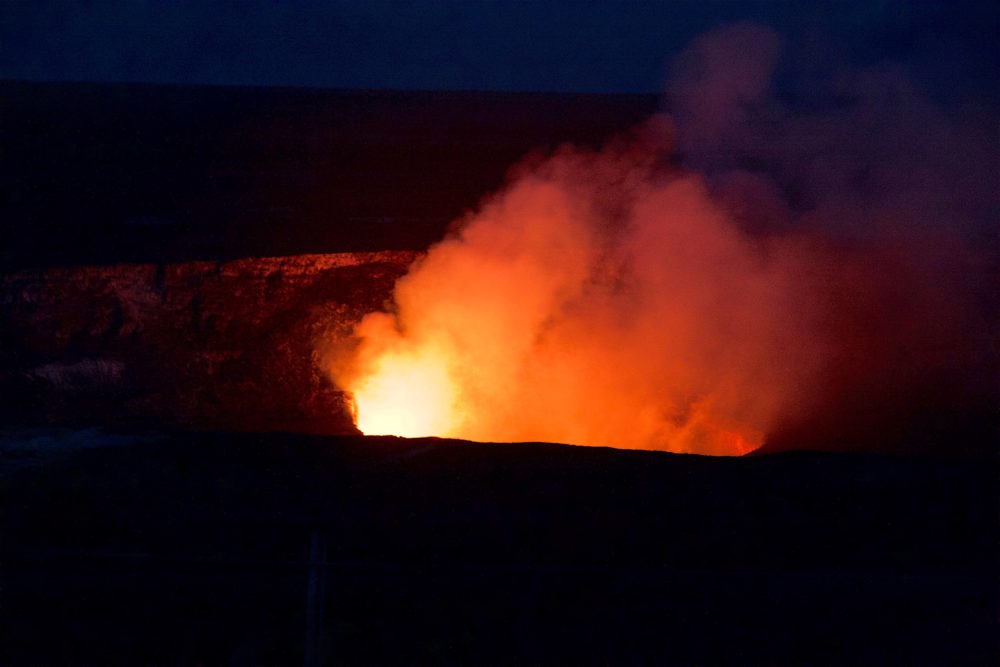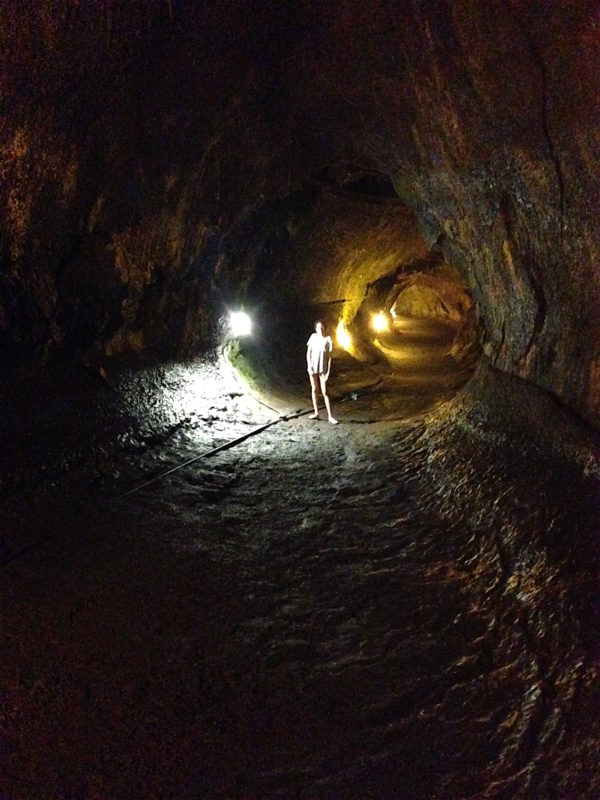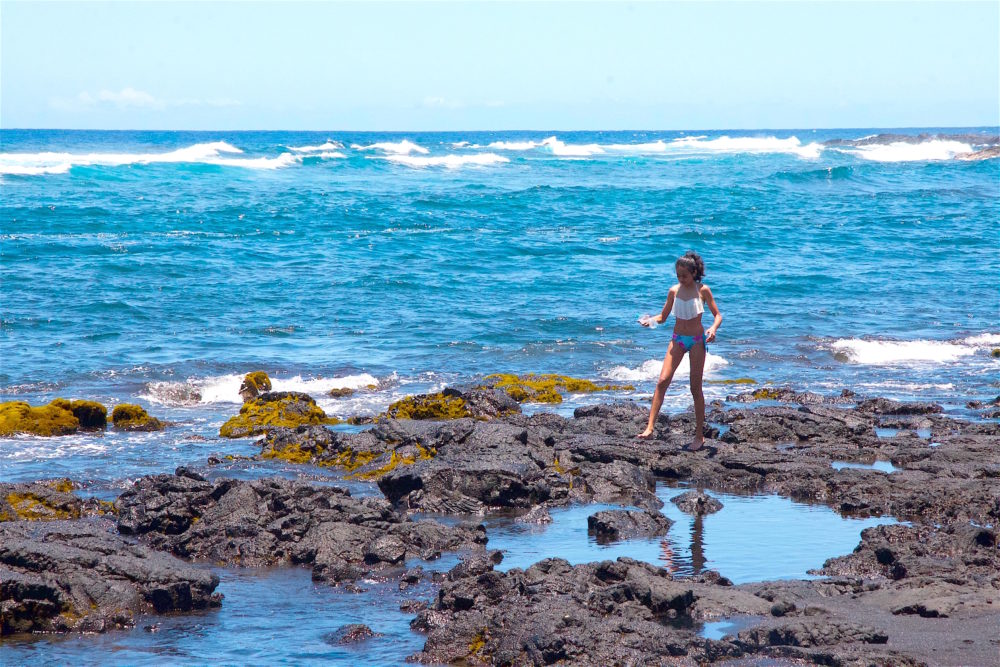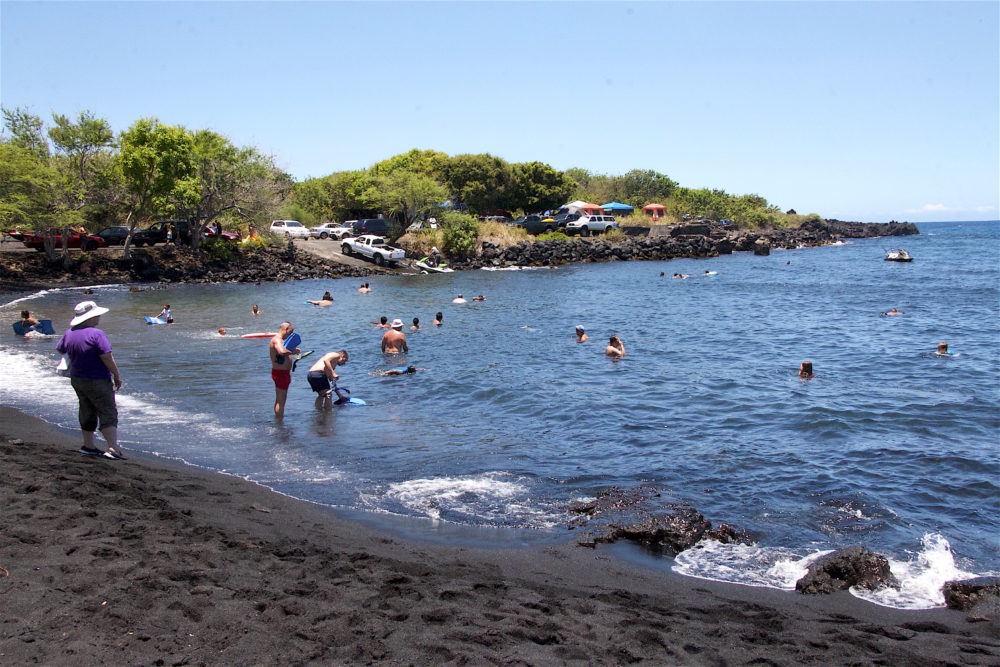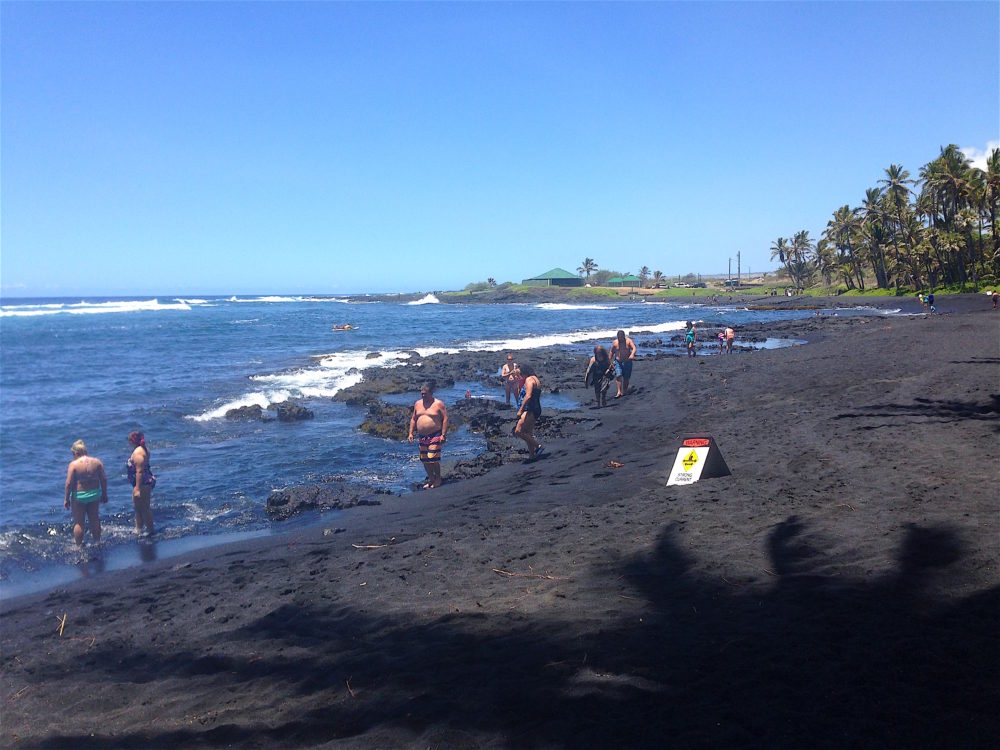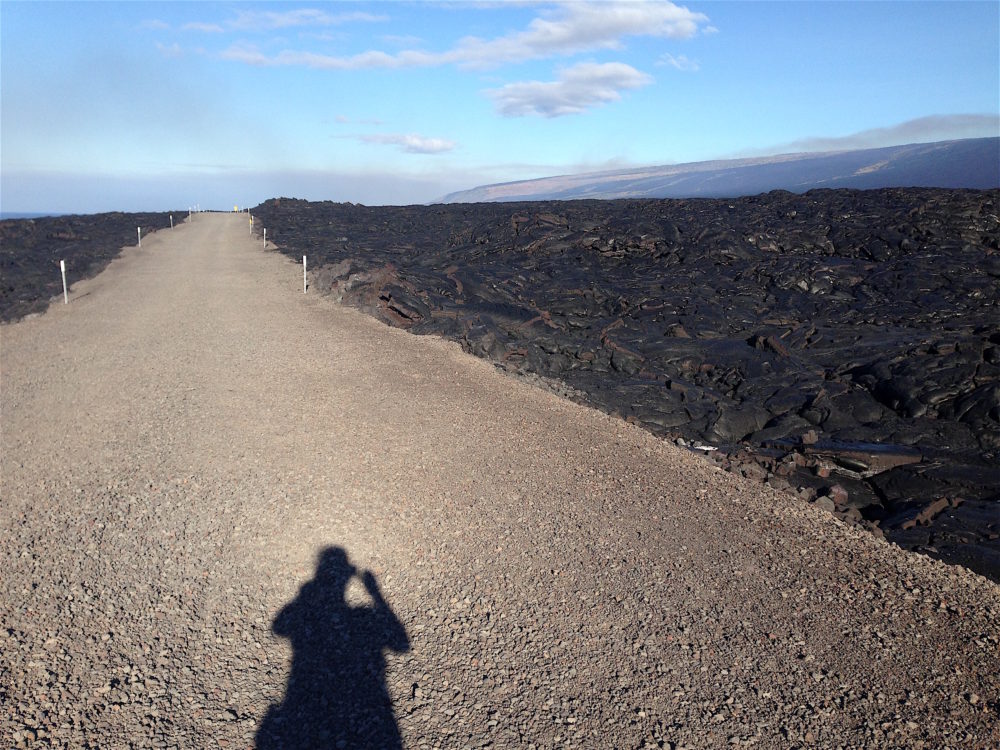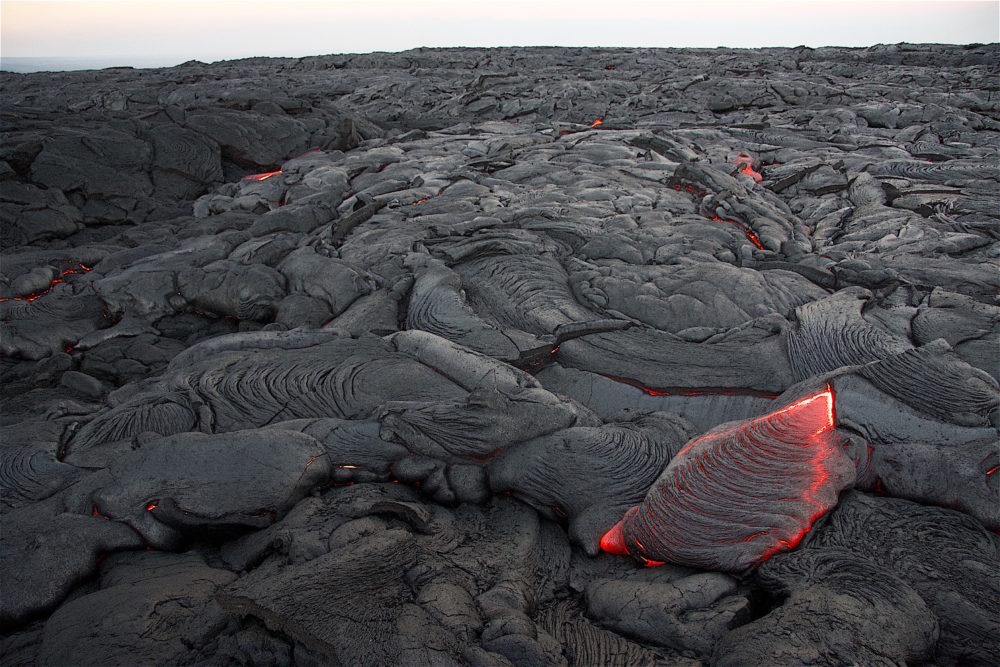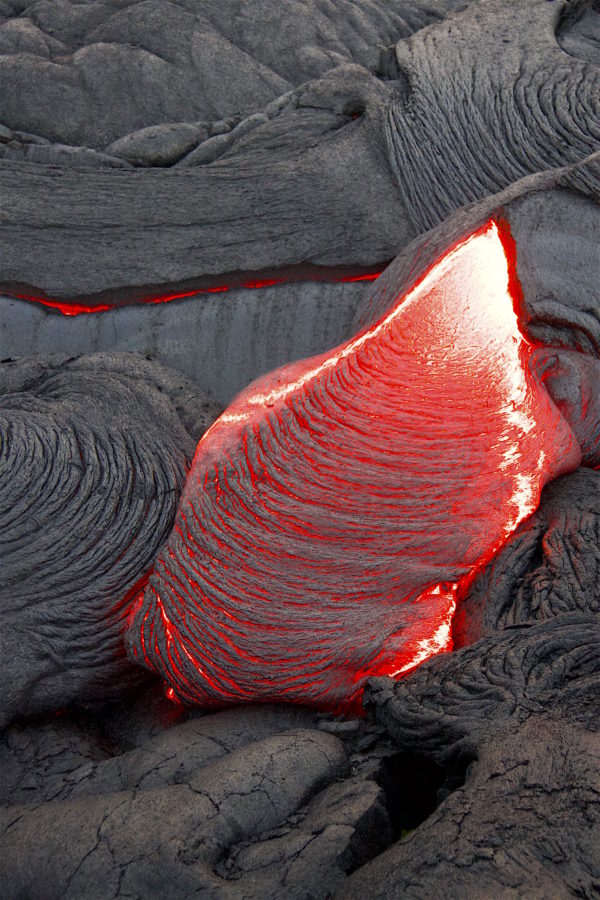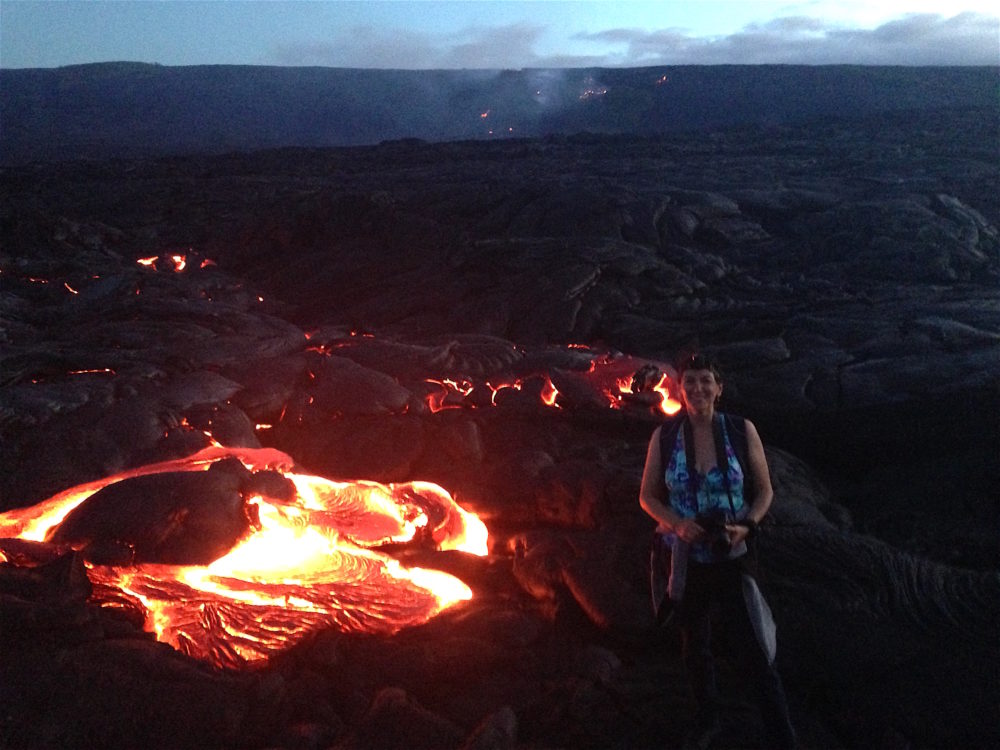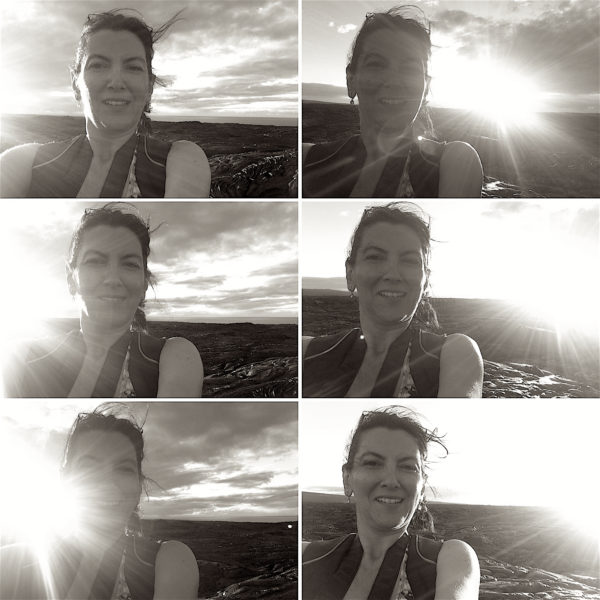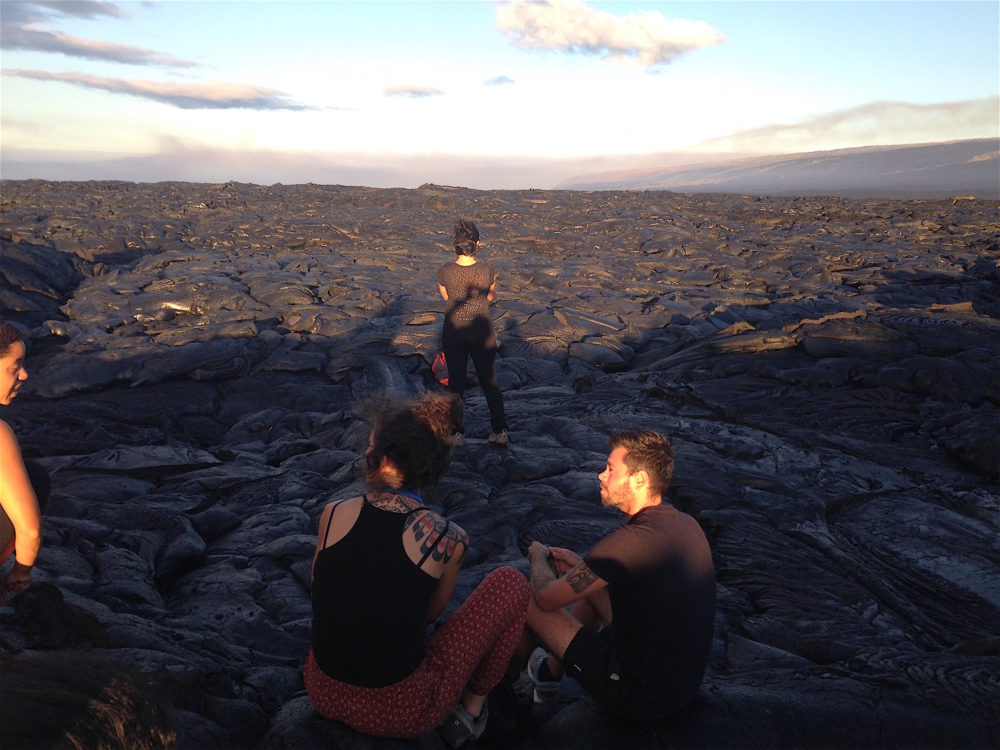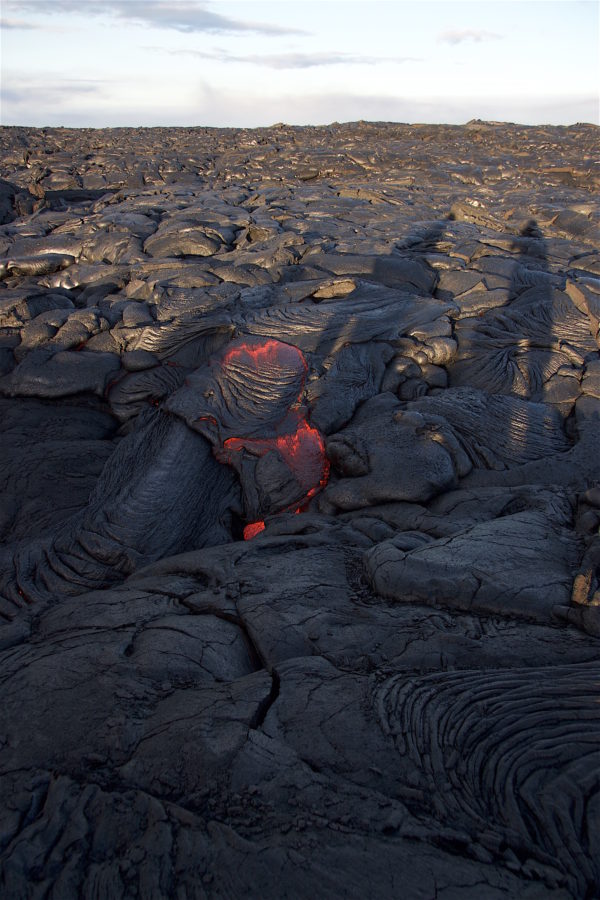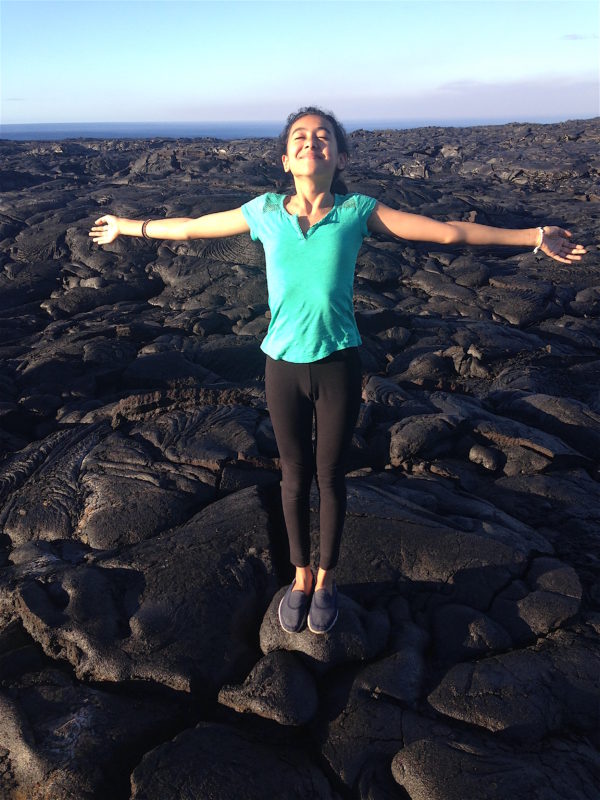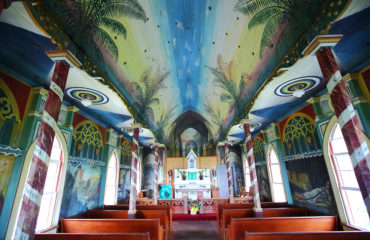…we distinguished bright orange stripes in the distance. At last we had come to meet the first stream of lava.
Big Island, Hawaii Road Trip in 15 Days (Itinerary Overview)
- Day 1-5 – Kailua-Kona and the Kohala Coast (West)
- Day 6-10 – Hawi, Kapauu, Waimea and Hilo (North and East)
- Day 11-12 – Hawaii Volcanoes National Park (Southeast)
- Day 13-15 – Captain Cook and The Painted Church (Southwest)
Day 11-12 – Hawaii Volcanoes National Park (Southeast)
Day 11 – The Volcanoes National Park and Punaluu Beach
Aloha! Welcome to Hawaii!
After spending the night at the Volcano Inn Hotel in Volcano Village, about 45 minutes southwest of Hilo, a great adventure of black sand beaches awaited us—the second on this trip—in the middle of a national park with active volcanos that it’s considered as a world heritage site.
The previous night we had the opportunity to take a look at the caldera of the Kilauea Volcano, the most active volcano in the world and one of the five volcanoes that make up Big Island or the Island of Hawaii. Our first impression was that the park promised a short but perfect two day stay.
Hawaii Volcanoes National Park
Hawaii Volcanoes National Park, founded in 1916, spans 333,000 acres from the top of the Mauna Loa volcano in the center of the island to the shores of the Pacific Ocean in the south.
The park has about 150 miles of trails through craters, deserts and jungles, a couple of museums, a lava tube at ground level, petroglyphs and two active volcanoes: Mauna Loa, whose most recent eruption was in 1984, and Kilauea, which has been erupting since 1983 and has added about 500 acres of land to the island.
The park’s great natural diversity was recognized in 1980 by UNESCO, which declared it a world biosphere reserve, then in 1987 the park was considered a World Heritage Site.
The opportunity to witness what some call “the process of creation and destruction” of Pele, the goddess of fire and volcanoes, makes this park one of the most attractive places for visitors and a sacred site for the natives of the island.
The black beach of Punaluu
This day was spent mainly at Punaluu, one of the most famous black sand beaches on the Kau Coast of Hawaii. Located about 30 minutes south of the Hawaii Volcanoes National Park and very close to the small town of Naalehu, the coast of jet black sand is an unforgettable sight to behold.
It’s not the ideal place to swim due to strong currents, but it’s possible to snorkel when the tide is low. There’s a picnic area and service of portable bathrooms that allow to spend a pleasant day under the shade of the coconut trees that border the beach.
It’s possible to spot giant tortoises basking in the sun on the beach that contrast with the intense black sand and rocks.
The day passed quickly. We noticed the passage of time when our stomach began rumbling. Back in Volcano Village, we had dinner at the Thai Restaurant (the Pad Thai dish was my favorite) and we went to sleep early. An extraordinary adventure awaited us the next day in Kalapana.
Day 12 – Kalapana and the impressive lava flows
This day we got up before dawn and traveled to the village of Kalapana, an hour east of Volcano Village, to see the lava flows. We took Highway 11 north to Keaau Bypass Road and continued southeast on Highway 130 to Kalapana.
There, our guide and a couple who joined the tour, were waiting for us at 4:00 a.m. to undertake the long walk that would take us near the rivers of incandescent lava. The walk back and forth was about 12.5 miles and it took us about four hours.
We walked for an hour on a straight gravel road. The following hour we walked towards the mountain on the volcanic rock until we glimpsed the first lava flow. The journey passed in the darkness, but each of us wore helmet lanterns that illuminated the road ahead and allowed us to keep our hands free.
After two hours, we distinguished bright orange stripes in the distance. At last we had come to meet the first stream of lava. The spectacle left us speechless. To see Pelé, the goddess of fire and the volcanoes, was extremely astonishing.
The lava flowed slowly, sometimes below the rocks and sometimes between its cracks. Suddenly, the lava flowed out and spilled onto the surface showing its orange-red color and making us feel its intense heat—more than 1,000 degrees Celsius (see VIDEO here). Then it cooled and slowly turned into rock, passing through different shades of gray until it reached a jet black. We witnessed the same spectacle over and over until dawn.
In those days, the lava flows had not reached the ocean. But two weeks later, the lava washed down the mountain and fell to the Pacific Ocean. The phenomenon, which had not happened in three years, added about 8 acres of land to the island (see VIDEO here).
The lava flows cover and destroy everything in their path. The population of Kalapana was buried by lava in 1990. There were no deaths, but it’s estimated that lava destroyed more than 100 houses in only 9 months.
Volcano Village
Located just five minutes from the entrance to the Hawaii Volcanoes National Park on Highway 11, Volcano Village is more than just a stop along the way.
The power of the volcanoes is reflected in the population of all kinds of artists and writers who have settled in this town—hidden in a forest of giant ferns and Japanese vegetation—where they find inspiration to create their works.
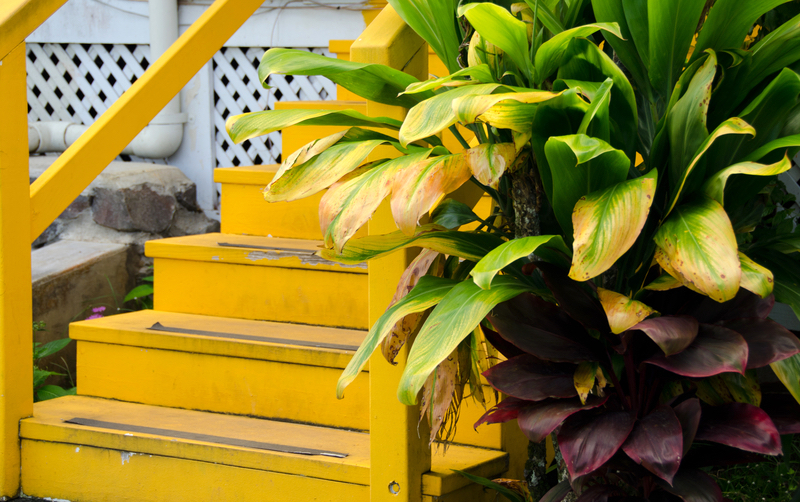
We didn’t have time to thoroughly explore the surroundings of this small, but quaint village, but it’s worth strolling through the art galleries or stretching your legs after enjoying a delicious meal to admire the natural beauty of this picturesque town.

